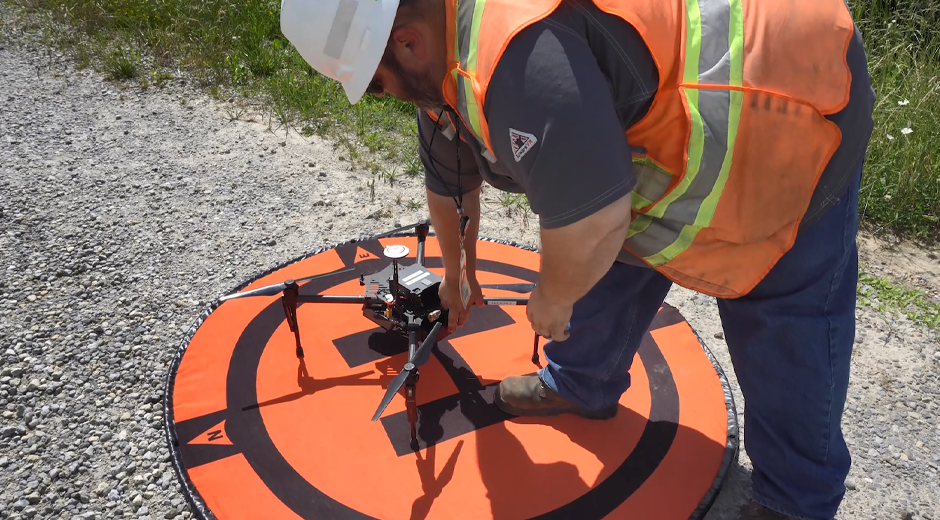Enjoy Flying Drones Safely by Following These Tips
Don’t fly drones near or into power lines, substationsUnmanned aircraft systems (UAS), or drones, used to seem like far-off futuristic technology, but today, there are hundreds of thousands flying across the skies. More than 230,000 people in the United States are licensed to fly for fun and another 355,000 commercially. While drones can be safe when used correctly, they may pose serious risks near electrical equipment or power lines.
Flying drones close to wires, substations, or other equipment may cause serious damage and pose significant safety risks to you or other people nearby. If your drone does veer off course and crash near or into FirstEnergy equipment, never try to retrieve it yourself.
“It is incredibly dangerous to climb into a substation or near a power line to get a drone,” said Randy Inman, Supervisor of Meteorology and UAS Services. “If something happens, contact us. We want you to stay safe, and we’ll be there to help you.”
Always prioritize safety when flying your drone by remembering these tips.
Become a licensed pilot before flying a drone.
Register your drone with the Federal Aviation Administration.
Fly your drone at or below 400 feet.
Do not fly in dark or windy conditions.
Keep your drone where you can see it.
Stay at least 200 feet away from power lines or other electrical equipment.
Never try to get your drone if it crashes near a downed line or substation. Call 1-888-LIGHTSS (1-888-544-4877), and we’ll help you retrieve it safely.
Drones Aid FirstEnergy Crews in Critical Work
FirstEnergy uses drones to inspect and maintain the power grid, often diagnosing and repairing potential issues before they can cause outages. Drones, which give a bird’s eye view of equipment, are particularly beneficial after storms, helping our crews more accurately pinpoint and diagnose damage and speed the restoration process.
Our 15 licensed drone pilots receive extensive training before taking to the skies, including a comprehensive two-week course and additional field practice, along with continuing education. Their expertise is especially critical when flying drones near power lines or substations.
“Electricity causes magnetic interference, which can lead a drone to lose control and crash,” said Inman. “Our pilots are trained to deal with these situations, but others are not. That’s why it’s important for other drones to stay at least 200 feet away from power lines and other electrical equipment.”
For more tips on staying safe around electricity and near power lines and equipment, visit FirstEnergy’s "Stop. Look. Live." safety campaign website.
MEDIA CONTACT: Jennifer Young, (330) 761-4362

